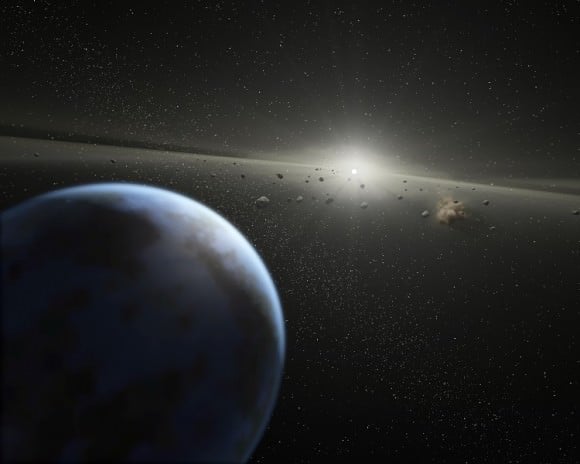Our hothouse planet of the solar system,
Venus
, is possibly a product of how close it is to the Sun, new research reveals. The team who have come up with a definition of a "Venus zone" around stars, saying that knowing where this area is could help pin down other areas that are more habitable for potential life.
"We believe the Earth and Venus had similar starts in terms of their atmospheric evolution," stated lead author Stephen Kane, an astronomer at San Francisco State University. "Something changed at one point, and the obvious difference between the two is proximity to the Sun."
The habitable region around a star is poorly understood because scientists don't quite know what conditions are necessary for life. It usually refers to the area where liquid water is possible, although this also depends on the climate of the planet itself. Clouds, terrain and atmospheric composition are just some of the variables that could affect habitability.
[caption id="attachment_110690" align="alignnone" width="580"]
Artist's impression of a massive asteroid belt in orbit around a star. Credit: NASA-JPL / Caltech / T. Pyle (SSC)[/caption]
To better figure out where potential Venus-like exoplanets lurk, Kane's team used data from the planet-hunting Kepler Space Telescope and examined solar flux -- or how much solar energy a planet gets -- to figure out where the Venus zone would be. The zone is then defined between two regions: where a planet could have the "runaway greenhouse effect" seen on Venus, and the spot where the planet is so close to its star that energy would wear away its atmosphere.
The first step would be pinpointing which planets reside within these zones. In future decades, astronomers could then examine the planetary atmospheres with telescopes to learn more about how they are composed -- and how similar they are to Earth or Venus. Meanwhile, Kane's team plans to model if carbon in the planet's atmosphere could affect the boundaries of the zone.
"If we find all of these planets in the Venus Zone have a runaway greenhouse-gas effect, then we know that the distance a planet is from its star is a major determining factor," Kane stated. "That's helpful to understanding the history between Venus and Earth."
A preprint version of the paper is
available on the Arxiv website
. The research has been accepted for publication in Astrophysical Journal Letters.
Source:
San Francisco State University
 Universe Today
Universe Today

